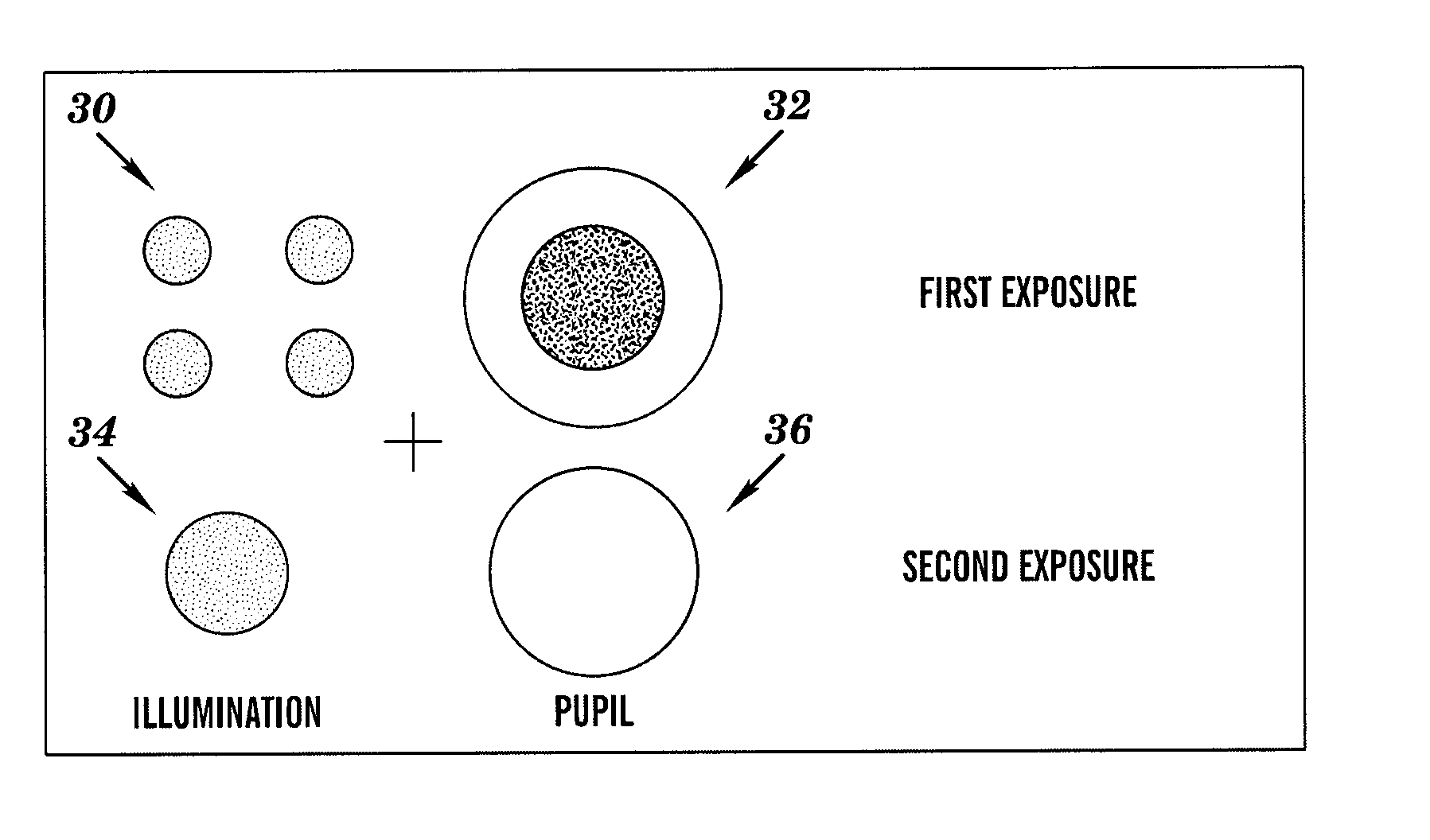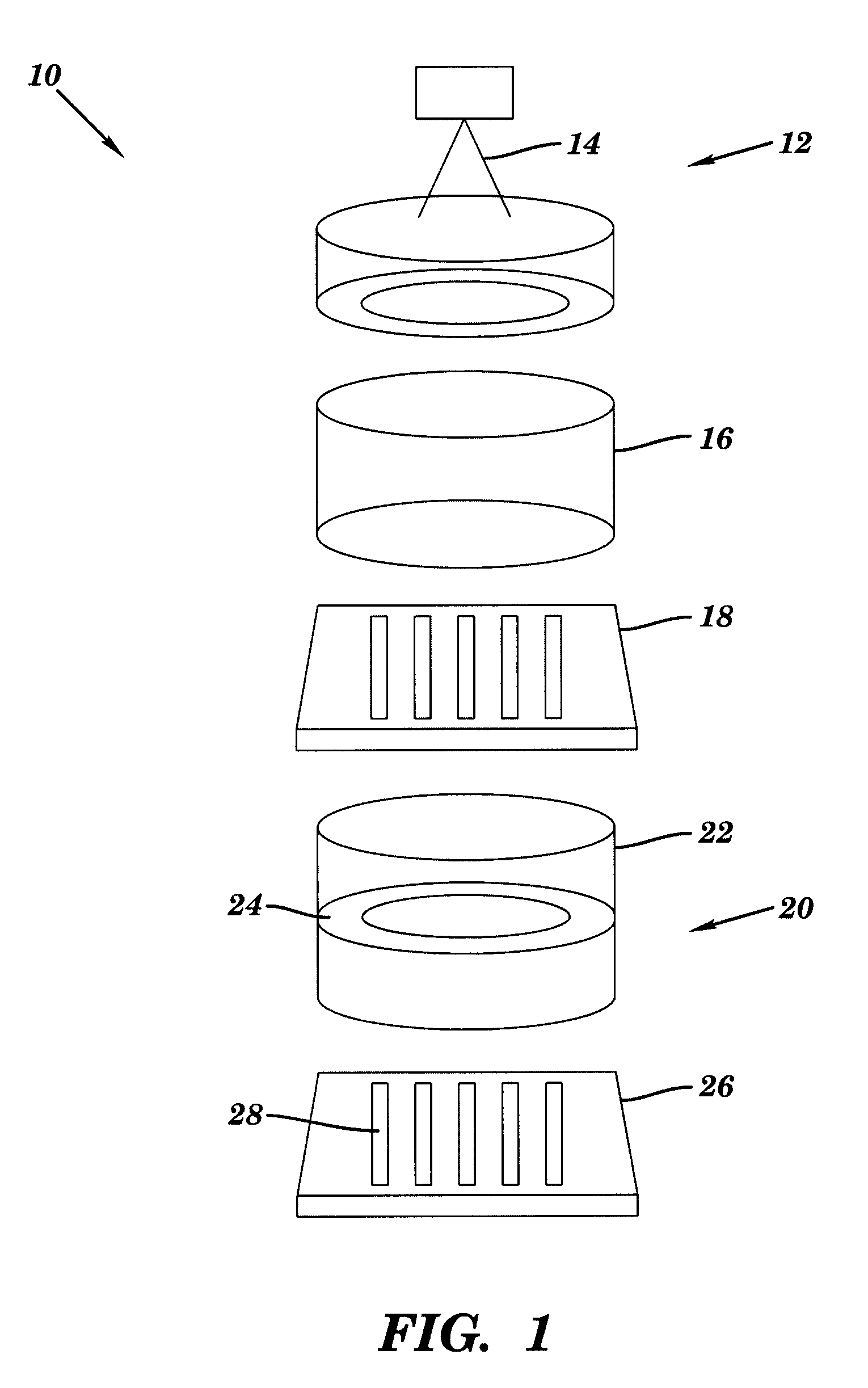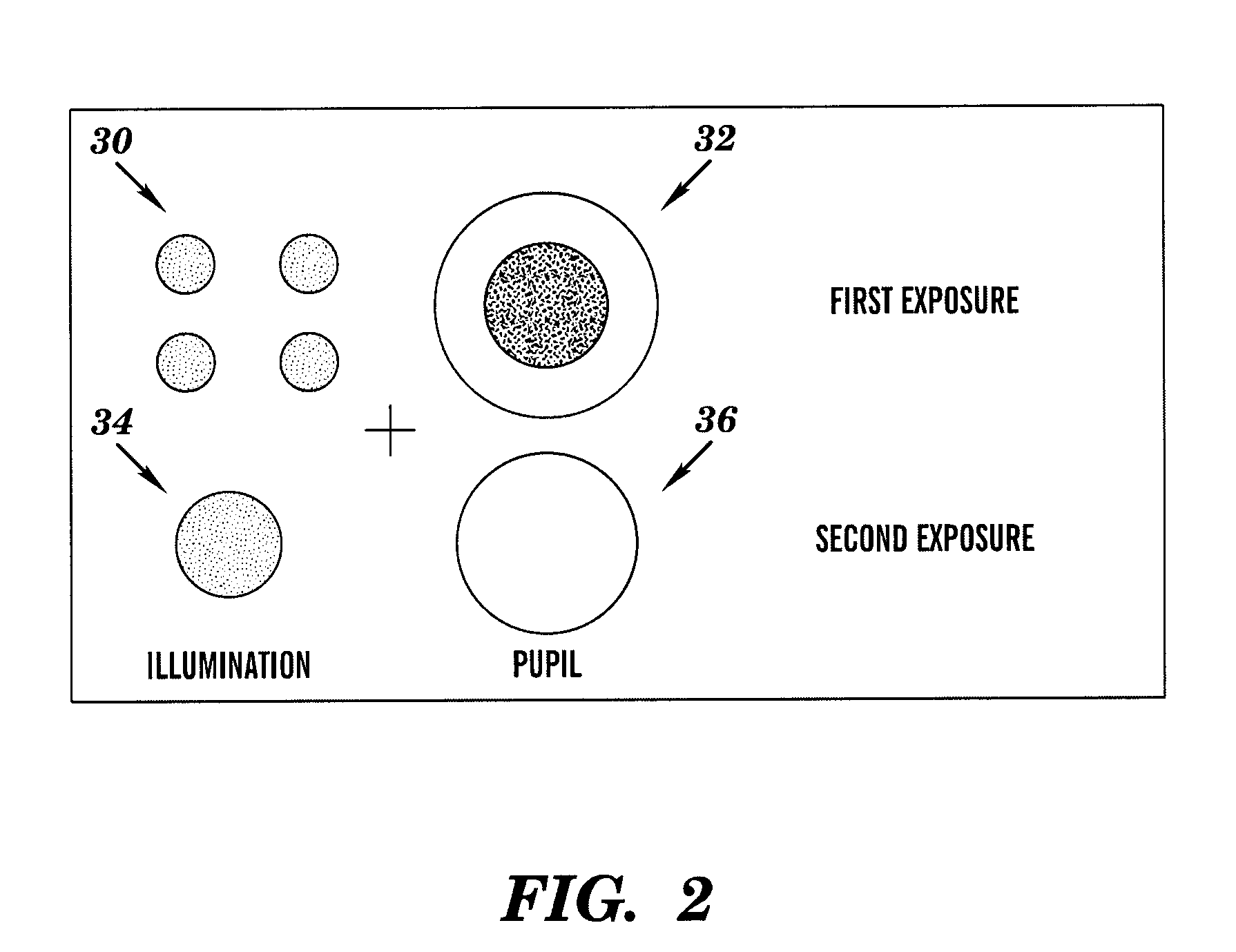Contact hole printing method and apparatus with single mask, multiple exposures, and optimized pupil filtering
a printing method and contact hole technology, applied in the field of manufacturing processes, can solve the problems of increasing the cost of the lithographic process, reducing the throughput of the exposure tool, and reducing the depth of focus (dof) to approximately half that of a single exposure process, so as to achieve the effect of optimizing the pupil filtering, reducing the impact of throughput, and improving the depth of focus
- Summary
- Abstract
- Description
- Claims
- Application Information
AI Technical Summary
Benefits of technology
Problems solved by technology
Method used
Image
Examples
Embodiment Construction
[0023]FIG. 1 schematically illustrates a lithographic system 10 in accordance with an embodiment of the present invention. The lithographic system 10 includes an illumination system 12 for providing multiple types of illumination 14. The illumination 14 is collected by a condenser lens 16 and directed to a mask or reticle 18. After passing through the mask 18, the light is collected by a projection lens system 20 comprising a projection lens 22 and a pupil filter 24, and projected to a semiconductor wafer 26 to print features 28 on the wafer 26. It is assumed for the purposes of this description that the reader has an understanding of lithographic systems commensurate with one skilled in the art. Accordingly, a detailed description of the operation of the various components of the lithographic system 10 is not presented herein.
[0024] Referring now to FIG. 2, in conjunction with FIG. 1, there are illustrated the illumination and pupil filter types used in the practice of a preferred...
PUM
| Property | Measurement | Unit |
|---|---|---|
| radius NAob | aaaaa | aaaaa |
| radius | aaaaa | aaaaa |
| wavelength | aaaaa | aaaaa |
Abstract
Description
Claims
Application Information
 Login to View More
Login to View More - R&D
- Intellectual Property
- Life Sciences
- Materials
- Tech Scout
- Unparalleled Data Quality
- Higher Quality Content
- 60% Fewer Hallucinations
Browse by: Latest US Patents, China's latest patents, Technical Efficacy Thesaurus, Application Domain, Technology Topic, Popular Technical Reports.
© 2025 PatSnap. All rights reserved.Legal|Privacy policy|Modern Slavery Act Transparency Statement|Sitemap|About US| Contact US: help@patsnap.com



